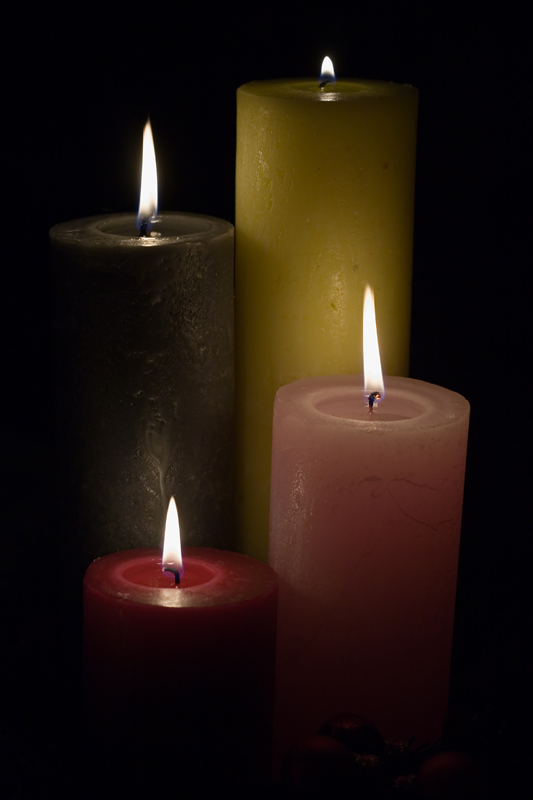OxidiSer.nl Photography - - Candles
Candles

A candle is a light source, and sometimes a heat source, consisting of a solid block of fuel and an embedded wick. Prior to the mid-19th century, candles were made from tallow (a byproduct of beef-fat rendering). Nowadays, they are usually made from wax. Paraffin wax is the most common, but there are also candles made from gel, soya and beeswax. A candle manufacturer is traditionally known as a chandler. Various devices have been invented to hold candles, from simple tabletop candle holders, to elaborate chandeliers. The heat of the match used to light the candle melts and vaporizes a small amount of fuel. Once vaporized, the fuel combines with oxygen in the atmosphere to form a flame. This flame provides sufficient heat to keep the candle burning via a self-sustaining chain of events: the heat of the flame melts the top of the mass of solid fuel, the liquified fuel then moves upward through the wick via capillary action, and the liquified fuel is then vaporized to burn within the candle's flame. The burning of the fuel takes place in several distinct regions (as evidenced by the various colors that can be seen within the candle's flame). Within the bluer regions, hydrogen is being separated from the fuel and burned to form water vapor. The brighter, yellower part of the flame is the remaining carbon being oxidized to form carbon dioxide. As the mass of solid fuel is melted and consumed, the candle grows shorter. Portions of the wick that are not evaporating the liquid fuel are consumed in the flame, limiting the exposed length of the wick and keeping the temperature and rate of fuel consumption even. Some wicks require manual trimming with scissors or a wick trimmer for even burning.





